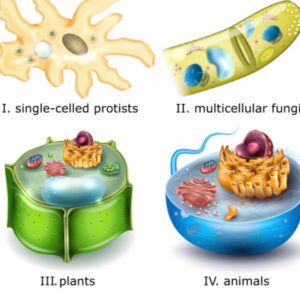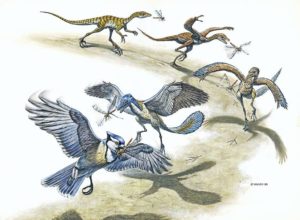Dec
13
Life Evolves
When talking or reading about the origins and diversity of life, or even simply about the life sciences generically, there are some terms that seem simple enough but are actually confusing. The reason is that, depending on who you are reading or talking to and the context of the discussion, there may be more than one definition that might fit the word in question.

A couple examples are “species” and “human”. Different scientists have different ideas for what should constitute a separate “species”, which is one of the reasons they can’t always agree on how to classify specimens. Similarly, the definition of “human” has changed over the years, partly due to evolutionary assumptions and partly due to the growing variety of hominid/hominin specimens discovered. (But, that’s a whole ‘nother discussion.)
One of the most “triggering” terms in the origins debates is “evolution”. But, like “species” and “human”, there are several definitions used, and it isn’t always clear which one is meant even within the context. The term can be misused due to ignorance, laziness, or even intent to deceive or confuse. Sometimes, it is simply because those of one persuasion hold that there are no worthwhile distinctions to be made, as they all describe the same natural process. For example, some who see #s 4 and 6 below as merely points along a continuum do not like the distinction of micro- vs. macroevolution, and they may choose not to use these terms.
So, for those of you who would like a little clarification regarding the different kinds or levels of “evolution”, and without getting too much into the technical weeds, here are a few simple explanations.
1) Evolution at its most basic definition is simply “change over time”.
2) Chemical evolution (aka abiogenesis): This refers to the yet-unproven idea that life came from nonlife through a series of natural, chemical steps, whereby some molecules eventually developed into complex organisms. (It is common for evolution advocates to point out that this is not part of Darwinian theory. However, any all-natural theory like Darwinism requires an all-natural start for life before the Darwinian processes have a chance to do their magic.)
3) Microbial evolution: Evolution of archaea, bacteria, viruses, and single-celled eukaryotes — i.e., extremely large populations of relatively simple, single-celled organisms that reproduce asexually. The changes involve variants in form without necessarily resulting in another species (see “speciation” below). A common example is that of bacteria acquiring resistance to antibiotics.
4) Microevolution: Small-scale changes (i.e., adaptation and variation of traits) over time within a species’ population (e.g., peppered moths in the UK).
5) Speciation: An outworking of microevolution, whereby one species can produce one or more closely related sister species (e.g., the Galapagos finches).
6) Macroevolution: To quote Dr. Fuz Rana, “This term refers to the creative potential for large-scale biological changes. Evolutionary biologists assert that over vast periods of time, the processes that generate microevolutionary changes and speciation can yield large-scale transformations (e.g., whales from a racoon-like [or wolf-like] creature or birds from dinosaurs).”
7) Megaevolution: This term is not seen or heard much except perhaps in academic circles. Within evolutionary theory, it refers to the largest changes and most significant events — e.g., the appearance of the first replicating molecules or of single-celled organisms leading to fungi, plants, and animals.

It is also possible for someone to use the term “evolution” when referring to a particular aspect of Darwinian evolution (e.g., gradualism, common ancestry, natural selection) while assuming the overall truth of Darwinian theory. For that matter, one may believe in and use any of these terms while assuming some sort of natural process yet being skeptical of the explanatory power of modern Darwinian theory.
As one might gather from reading my other posts on creation/evolution/ID, I hold to an Old Earth Creationist position. Like most people, I have no problem with #s 1, 3, 4, and 5 above, which I believe are evidenced by scientific observation and analysis and present no challenges for Scripture (or vice versa). On the other hand, I find the scientific and scriptural/theological arguments for numbers 2 and 6 (and, by extension, 7) to be unconvincing, at best.
So, yes, life “evolves”, but (imho) only in a limited sense.
I should perhaps note that the term “stellar evolution” also pops up sometimes. It refers to how a star — not a population or species of stars — changes over time. But, this is not really pertinent to this discussion, which concerns biology, biochemistry, and genetics. Only Young Earth Creationists really have a problem with it, anyway, because it describes a process that takes millions, even billions, of years.
I hope someone finds this helpful….
(H/T Fuz Rana, Hugh Ross, Sandra Dimas (RTB))















